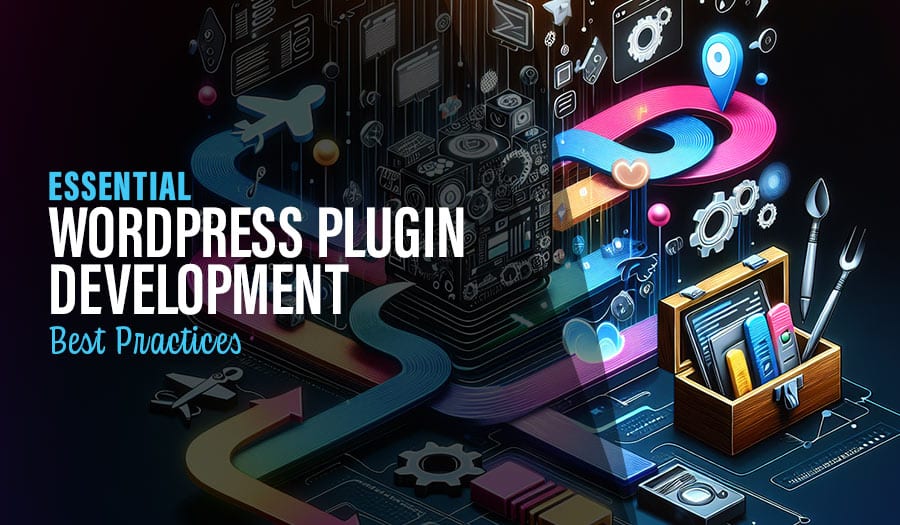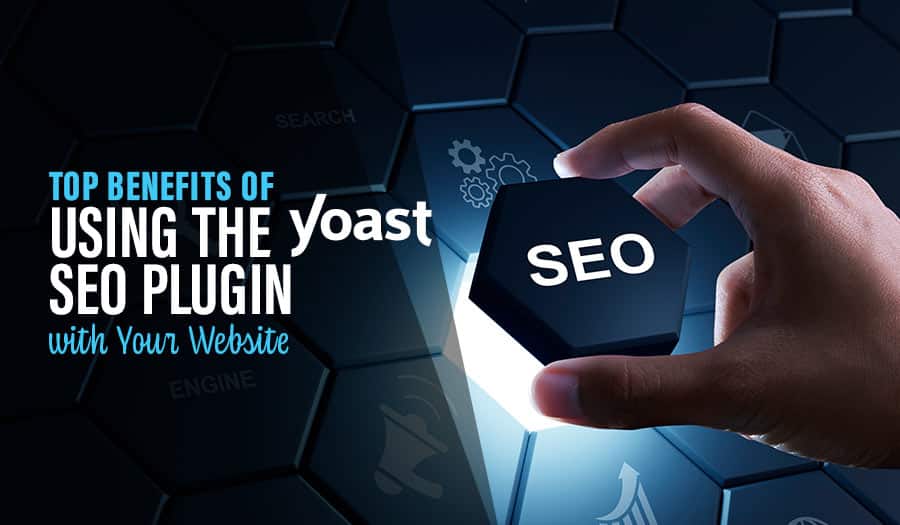Keen on mastering wordpress plugin development best practices? This no-frills guide lays out the fundamental principles to develop secure, performant, and well-architected WordPress plugins. From code standards to user interface design, get ready to transform your plugin ideas into exemplary instances of WordPress craftsmanship.
We’ll walk you through each practice without overwhelming you with jargon or tangents, setting you up for a smooth development process.
Key Takeaways
- Plugin development in WordPress must begin with clear planning, defining the purpose, and adhering to WordPress coding standards to ensure functionality, compatibility, and a positive user experience.
- Security, internationalization, and performance optimization are paramount in plugin development, with the need for robust security measures, support for various languages, and efficient code and caching techniques to maintain user trust and enhance user experience.
- For successful adoption, a WordPress plugin must have thorough testing, clear documentation, seamless updates, and be prepared for submission to the WordPress repository, while marketing and monetization strategies are key post-development steps.
Understanding WordPress Plugin Development
The power of WordPress lies in its flexibility, a trait largely attributed to plugins and the WordPress core. These tools enable the customization of WordPress websites, including your own WordPress website, to meet diverse user needs, from minor tweaks to significant feature additions.
Plugins can range from simple to complex, depending on the functionality and features they bring to the table. So, whether you’re looking to create a simple social sharing plugin or a comprehensive SEO tool, an understanding of WordPress plugin development is crucial.
The beauty of the WordPress ecosystem lies in its community. A vibrant collective of professional WordPress developers, theme developers, and users, the WordPress community contributes and benefits from the platform.
These developers carry the responsibility of crafting plugins that empower the WordPress platform, enhancing its functionality and creating a better experience for users. Thus, the process of developing WordPress plugins is not just about adding new features, but also about contributing to the WordPress community and helping shape the future of the platform.
Essential Best Practices for Developing WordPress Plugins
Delving deeper into WordPress plugin development, there are certain plugin development best practices that developers need to follow in their wordpress plugin development project. These practices help ensure that the plugins you develop are efficient, reliable, and user-friendly.
After all, as architects of plugins and experts in WordPress development, it’s our responsibility to create tools that enhance user experience and contribute positively to the WordPress ecosystem.
From planning your plugin’s purpose to optimizing its performance, a lot goes into developing a WordPress plugin. We’ll explore these aspects in the forthcoming sections.
So, buckle up for a deep dive into the best practices for WordPress plugin development, as we unravel the secrets to creating top-notch WordPress plugins.
Plan and Define Your Plugin’s Purpose
Just as architects wouldn’t start building without a blueprint, developers shouldn’t dive into plugin development without proper planning. Defining the purpose of your WordPress plugin helps you stay focused on the specific needs you’re addressing, ensuring a relevant and effective tool for end-users.
This involves setting clear objectives, identifying the target audience, and outlining the key features and functionalities your plugin will offer.
Strategizing and planning in the early stages of plugin development can significantly streamline the process, reducing the likelihood of unnecessary revisions down the line. Moreover, it ensures you’re creating a plugin that truly resonates with its intended users, thus enhancing user satisfaction and guiding the development roadmap.
So, before you start coding, take a step back, identify the problem you’re trying to solve, and map out your plugin’s purpose.
Follow WordPress Coding Standards
In the world of WordPress plugin development, consistency is key. Following WordPress coding standards is crucial for ensuring consistency in your code, which enhances its readability and compatibility with other plugins and themes.
This involves maintaining a clear and well-organized folder structure and using unique names for plugin files to prevent conflicts with existing functions or classes.
One vital aspect of adhering to WordPress coding standards is using namespacing. This practice isolates your plugin’s functions, variables, and classes in the global namespace, preventing conflicts with other plugins or themes.
In short, adhering to WordPress and PHP coding standards is a vital measure to achieve code compatibility, readability, and approval for the WordPress repository.
Prioritize Plugin Security
In an era where data breaches and cyber threats are prevalent, security needs to be at the forefront of WordPress plugin development. When users install a plugin, they trust the developer to have implemented robust security measures that protect their websites from potential threats. One such measure is input validation, which ensures that only data conforming to defined policies is processed by the plugin.
Another critical security measure is user input and data sanitization. This process prevents malicious or erroneous data from compromising the plugin’s functionality and website security. Additionally,
WordPress nonces are used to validate specific actions, such as deletions or previews, ensuring the integrity of the requests and thwarting CSRF attacks. Hence, when developing WordPress plugins, always prioritize security to maintain user trust and protect websites from potential threats.
Implement Internationalization and Localization
In a global digital landscape, the reach of your WordPress plugin shouldn’t be limited by language barriers. Internationalization and localization are key to ensuring that your plugin resonates with a diverse global audience. By enabling translation of strings within the plugin, you make it accessible to non-English speakers, thereby broadening your plugin’s reach to various markets around the world.
The process of internationalization not only increases your plugin’s usability but also enhances its potential popularity.
It’s like opening a door to a wider audience, inviting them to experience the usefulness of your plugin. So, when developing your WordPress plugin, ensure it speaks the language of its users, no matter where they are in the world.
Optimize Performance through Efficient Code and Caching Techniques
Performance optimization is a key aspect of WordPress plugin development. A well-performing plugin not only enhances user experience but also reduces server load. To achieve this, you need to:
- Write efficient code
- Utilize caching techniques
- Use WordPress native functions like wp_insert_post() to reduce the number of direct database queries, thereby optimizing plugin performance.
Caching techniques, on the other hand, improve page load times, which is critical for enhancing performance.
By storing data that takes a long time to compute or retrieve, caching eliminates the need for repetitive computations or retrievals, thus improving performance. In essence, performance optimization through efficient code and caching techniques is key to creating a fast, smooth, and enjoyable user experience.
Develop User-Friendly Interfaces and Ensure Accessibility
The interface of your WordPress plugin is the bridge between it and its users. A clean and intuitive user interface simplifies user flow and enhances overall user experience. It’s like the storefront of a shop; if it’s inviting and easy to navigate, customers are more likely to walk in and explore.
When designing your plugin’s interface, consider the user’s perspective. Use familiar design patterns and make sure the interface is not cluttered. Provide clear instructions and feedback, and ensure that all elements are easily accessible.
Remember, a user-friendly interface is not just about aesthetics; it’s about making the user’s interaction with your plugin as simple and efficient as possible.
Test Thoroughly and Use Debugging Tools
Much like a chef tasting their dish before serving, developers need to thoroughly test their plugins before releasing them. This involves conducting unit, integration, and usability tests to identify potential problems early on and ensuring that individual components function as expected. Creating a staging environment using tools like XAMPP and MAMP servers is critical for testing plugins in a controlled setting before release.
Moreover, testing your plugin across different WordPress versions, themes, and plugins is crucial for ensuring compatibility, preventing conflicts, and avoiding unexpected behavior. During plugin development, WordPress offers debugging tools such as WP_DEBUG and functions like error_log() to assist developers in identifying and resolving issues.
These tools are designed to streamline the debugging process and enhance the overall development experience..
Remember, a thoroughly tested plugin is a reliable, secure plugin, and reliability breeds user trust.
Maintain Clear Documentation and Code Comments
Documentation is the user manual of php code for your WordPress plugin. It outlines the plugin’s functionality, installation, usage, and provides troubleshooting tips and FAQs for users. By adding clear comments within your codebase, you make it easier for other developers to understand and collaborate on the code.
Whether your plugin is intended for developers or end-users, proper documentation can help them understand and use your plugin effectively.
This includes details on hooks, filters, and even code snippets and examples for developers, while for end-users, it can be an easy-to-understand guide on how to use the plugin’s features.
Regularly updating and maintaining your documentation keeps it current with plugin updates and version control, making it a vital resource for users and developers alike.
Keep Plugin Updates Seamless and Well-Tested
Just as software needs updates to fix bugs and add new features, your WordPress plugin also needs regular updates. However, these updates should seamlessly integrate with existing installations to prevent disruptions for users. One way to ensure this is to use Semantic Versioning when releasing plugin updates.
This method clearly communicates the nature and impact of changes, helping users understand what to expect from the update.
Moreover, reminding users about the option to enable auto-updates through the plugin’s admin interface can facilitate the update process. Remember, a seamless and well-tested update not only improves the functionality of your plugin’s performance, but also enhances user experience and trust in your plugin.
Bonus Tips for Streamlined WordPress Plugin Development
As we delve deeper into the realm of WordPress plugin development, here’s a bonus tip: use a boilerplate. It provides a structured starting point for your project, including prewritten functions that promote consistency and quality.
Tools like ‘WordPress Plugin Boilerplate’, ‘WordPress-Plugin-Template’, and the ‘wp scaffold plugin’ command from WP-CLI are great resources that generate the basic files and structure necessary for starting a new WordPress plugin, allowing you to focus on choosing the perfect plugin name.
Another tip for streamlined plugin development is to adopt MVC (Model-View-Controller) architecture. It significantly improves your plugin’s maintainability, scalability, and separation of concerns, which are essential aspects for sophisticated WordPress plugin development.
Lastly, consider leveraging development tools and services like ‘Plugin Machine’ that offer integrated solutions to develop WordPress plugins, create plugins, and enhance WordPress’ existing plugins, with new features.
Preparing Your Plugin for the WordPress Repository
Once your plugin is developed, tested, and ready for the world to use, the next step is to prepare it for the WordPress repository. This involves adhering to best practices to get your plugin approved, as the WordPress.org review team investigates any infringements of guidelines and security issues.
A crucial part of this process is creating a ‘readme.txt’ file that describes the plugin’s functionality, informing potential users and fulfilling repository submission requirements. Additionally, ensure that your main plugin file is properly organized and documented.
Next, package your plugin to facilitate easy installation, updating, and uninstallation. This encapsulates versioning, crucial for managing updates, and ensuring compatibility with different versions of WordPress.
Once your plugin is approved, upload it to the official WordPress website plugin repository using an SVN client. Any associated artwork, such as header banners and icons, must comply with WordPress naming and dimension guidelines in the WordPress plugin repository.
Marketing and Monetizing Your WordPress Plugin
Developing a WordPress website plugin is just half the battle; the other half is marketing and monetizing it. Effective marketing involves utilizing:
- Inbound marketing
- Social media promotion
- Blogging
- User engagement
to spread the word about your plugin. Offering a freemium model or a free trial period can entice users to try your plugin before making a purchase.
When it comes to monetization, various sales models can be employed.
These include:
- Recurring subscriptions
- Customer self-service
- Transactional
- Enterprise models with different support and price points
User feedback plays a vital role in refining your plugin’s documentation, which enhances its market visibility and user support.
Remember, a well-marketed and monetized plugin not only generates revenue but also contributes positively to the WordPress ecosystem.
Summary
From understanding the fundamentals of WordPress website plugin development to marketing and monetizing your plugin, we’ve journeyed through the intricate process of crafting a WordPress website plugin.
We’ve seen how planning, adhering to coding standards, prioritizing security, and optimizing performance are key in creating efficient, reliable, and user-friendly plugins. Along the way, we’ve also learned how to prepare a plugin for the WordPress repository and how to market and monetize it effectively.
As we conclude our journey, remember that every successful WordPress website plugin begins with a clear purpose, is shaped by best practices, and is refined by user feedback. So, gear up and start creating your own WordPress plugins that can transform the WordPress experience for users around the world.
Frequently Asked Questions
What are the key considerations when developing a WordPress plugin?
When developing a WordPress website plugin, it’s crucial to prioritize planning, security, coding standards, internationalization, performance, user-friendly interfaces, and thorough testing to create a successful and reliable plugin.
Why is security important in WordPress plugin development?
Security is crucial in WP plugin development as it protects websites from potential threats and builds trust with users by utilizing input validation, input and data sanitization, and WordPress nonces.
What is the significance of internationalization and localization in WordPress plugin development?
Internationalization and localization in WP plugin development are crucial for enabling translation of plugin strings, broadening its reach to various markets and increasing usability and potential popularity. This allows your plugin to be available to a wider audience.
How can I prepare my WordPress plugin for the WordPress repository?
To prepare your WP plugin for the WordPress repository, ensure you follow best practices, create a readme.txt file, package the plugin, and upload it to the WordPress Subversion repository. Good luck with your submission!
How can I successfully market and monetize my WordPress plugin?
To successfully market and monetize your WP plugin, you can use strategies such as inbound marketing, social media promotion, freemium models, and incorporating user feedback to improve documentation and visibility in the market. By implementing these strategies, you can increase the success of your plugin.
Take your business to the next level with a Pixel Fish Website.
Check out some of our latest Website Design projects.
View some case studies of our website design work:
Moreton Bay City Pulse
Omnia Improvement
Proper Pasty Co
Performance Line Physio
Further Information
Why you should use Elementor for your new WordPress Website
WordPress Web Design Sydney: Professional Solutions for Your Next Website Project
Custom Development Important Information and Terms
Get the Best Custom Website Design Solution for Your Business
9 Reasons to Use WordPress for E-Commerce Website Design
The Complete List of Every WordPress Divi Module – Our Guide
Essential Business Website Design Strategies: How to Maximise Your Brand
How to Create and Launch a Website for a New Business Whilst Still Working Fulltime
Your Brand’s Potential: Maximizing The Impact of Website Design on Brand Building
10 Signs You Need to Redesign Your Website: Is Your Site Keeping Up?
Boosting Business Success: The ROI of a Well-Designed Website & Why It’s Worth the Investment
Top Strategies to Tackle Common Web Design Challenges
How Effective CTAs Can Supercharge Your Website Results



